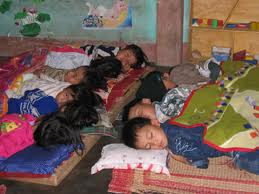 I’ve just begun a new project using word search methods to study dream reports from children and adolescents. I thought that showing in real time the steps of my analytic process might help other people learn how to apply these methods to their own dream studies.
I’ve just begun a new project using word search methods to study dream reports from children and adolescents. I thought that showing in real time the steps of my analytic process might help other people learn how to apply these methods to their own dream studies.
Any research project starts with a question. In this case my question was about “big dreams” in childhood (the subject of a book-in-progress). I wanted to know more about recurrent patterns in the dreams that children and adolescents remember most vividly. Other researchers like David Foulkes have studied normal, average dream patterns in children, but my question focused on the distinctive features of highly memorable dreams in the early stages of life
Earlier this spring I contacted Harris Interactive, an opinion research company, regarding their “YouthQuery” survey, which enables a researcher to ask a single question and receive online answers from @1000 American children ages 8-18, along with a few other demographic data points. (The cost of this survey, while considerable, was no more than I’ve paid research assistants to help with other projects in the past.)
There are pros and cons to online surveys. On the downside, it’s impossible to validate a person’s answers, and it favors participants who are educated and affluent enough to use computers. On the upside, participants can give their answers in a private setting in their own words, which is extra valuable for a word search approach.
I try not to let excessive angst about methodology slow me down. Every study has its limits. Once you’ve identified them, you move on and do the work. I’m more interested in discovering what a method can do rather than dwelling on what it can’t do.
The Harris people and I decided to word the survey question as follows:
“We are interested in hearing about a dream that you had and remember a lot about. Please try to tell us everything you remember about the dream, including where you were, who else was there, what happened, how you felt, what you were thinking during the dream and how it ended. Please also tell us about how old you were when you had the dream.”
The other questions asked in the standard YouthQuery survey regarded age, gender, race/ethnicity, current grade in school, school location (urban, suburban, rural), and school type (public, private, parochial).
Harris conducted the survey in early April, and then I uploaded the info (thanks to Kurt Bollacker) into the sleep and dream database (SDDB). The dream reports and answers to the other questions can be seen at:
Making this information publicly available enables others to check my work and test my claims, always a good thing in empirical research. More importantly, it allows other researchers to explore facets of the data beyond what I or any single analyst can pursue.
Dream researchers have operated for too long with isolated sources of data that never receive more than one investigator’s systematic attention. Digital databases can help our field move forward into a more dynamic and collaborative future.
